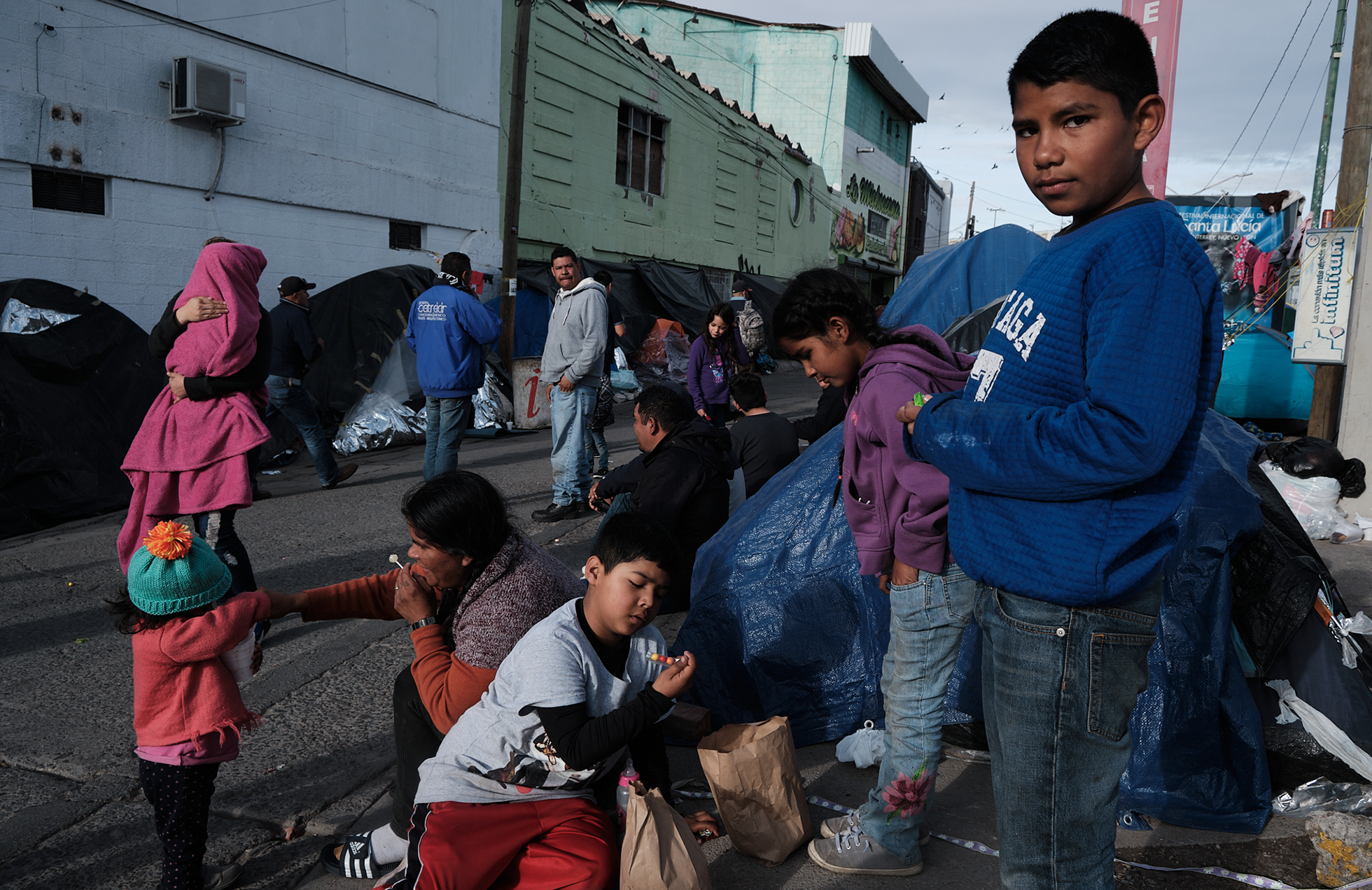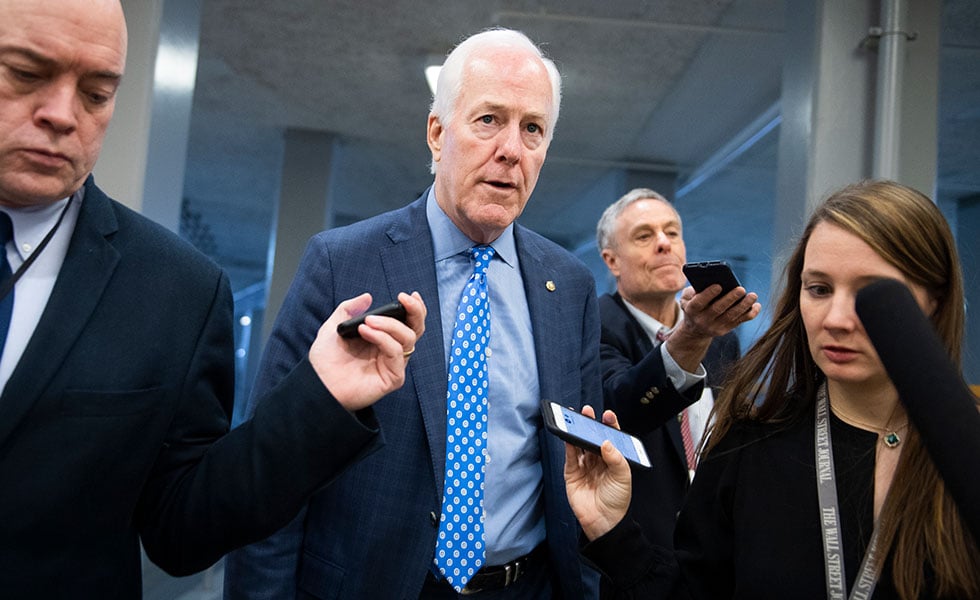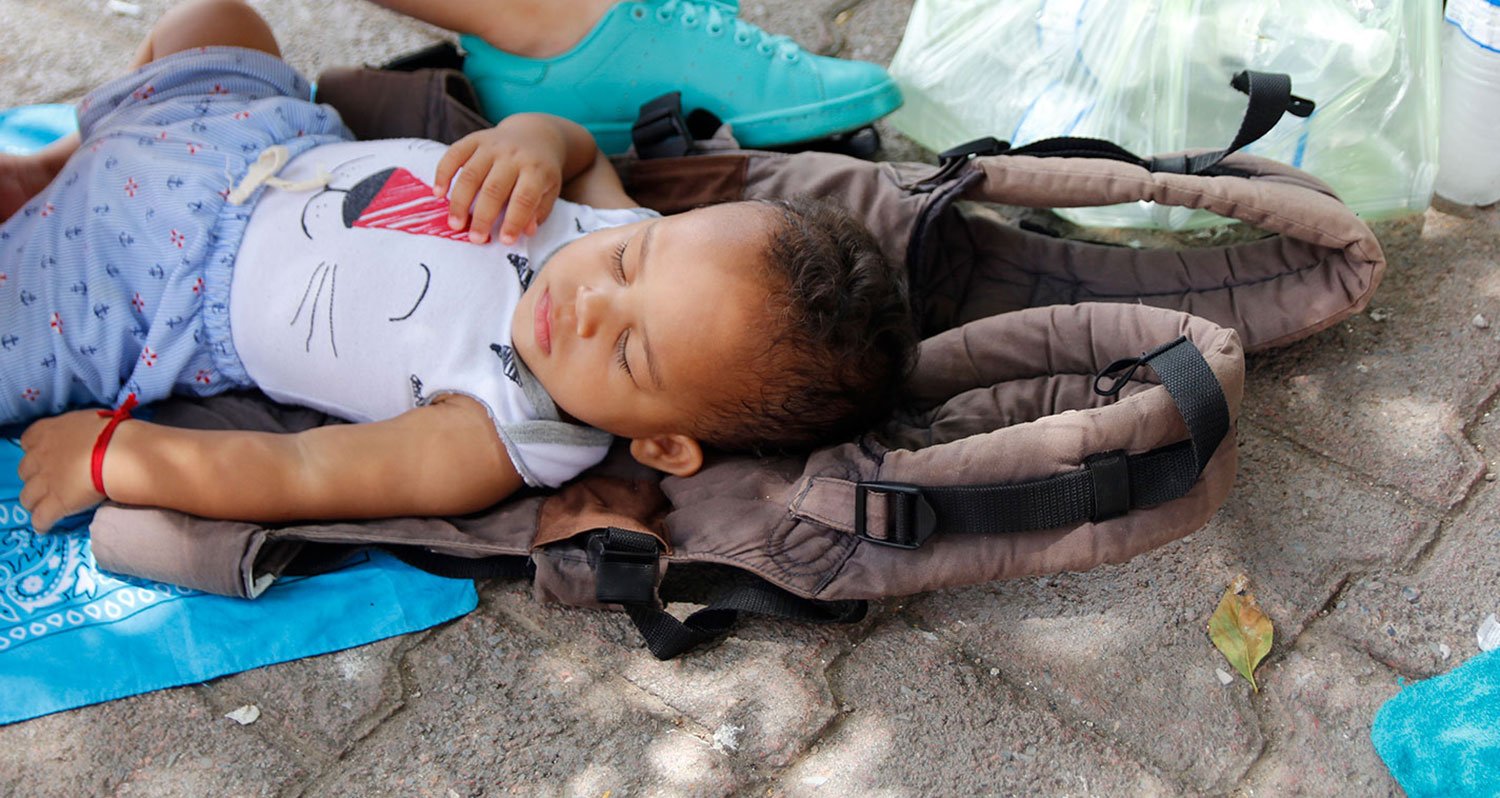Over the summer, thousands of people from the Mexican states of Guerrero, Michoacán, and Zacatecas streamed to the border. They came seeking asylum in the United States, an escape from places wracked by narco violence and gangs that extorted and murdered with impunity. Desperate, they packed their children and the few remnants of their lives that they could carry and trekked north.
They came after rumors spread that America had loosened restrictions on Mexicans seeking asylum. Those reports, they learned when they arrived in Ciudad Juárez, were false. (Since 2001, 85 percent of Mexican asylum-seekers have lost their cases; for those without a lawyer, that rate was 95 percent.) U.S. border agents mostly turned them away, citing a “metering” system that restricts the number of cases they can take per day. The migrants resolved to wait to make their plea for asylum. Throughout the summer and fall, three tent villages of hundreds of people sprang up near the border bridges.
At the Santa Fe camp, at the foot of a bridge connecting Juárez and El Paso, families settled into routines. In the mornings, men would head out to pick up water jugs or scrounge for food, while the women bathed children in local hotels, readying them for class with an Episcopal priest. Some might venture a few blocks down to the town square, but never farther. Juárez is dangerous—the city had 140 homicides in November alone—and sticking close to the camp meant they’d be ready for the slim chance that the border would open, allowing a few lucky migrants to cross.
For many, that opportunity never came. On January 7, a fleet of government cars, school buses, and a garbage truck swarmed the village. Three representatives from the Chihuahuan state attorney’s office, accompanied by heavily armed soldiers, gathered the perplexed migrants and explained that this was their last day on the street. They had two hours to clear their things before being bussed to one of several shelters away from the border’s edge. If anyone failed to comply, their children would be taken away by child services.
Tents and toys and folding chairs were thrown into the garbage truck. Children watched from the curb as the roaring vehicle’s hind jaws pulverized the tents they’d called home for months. By sunset, the street was bare.
These are the stories of the Santa Fe residents, now scattered—the story of a village that is no more.
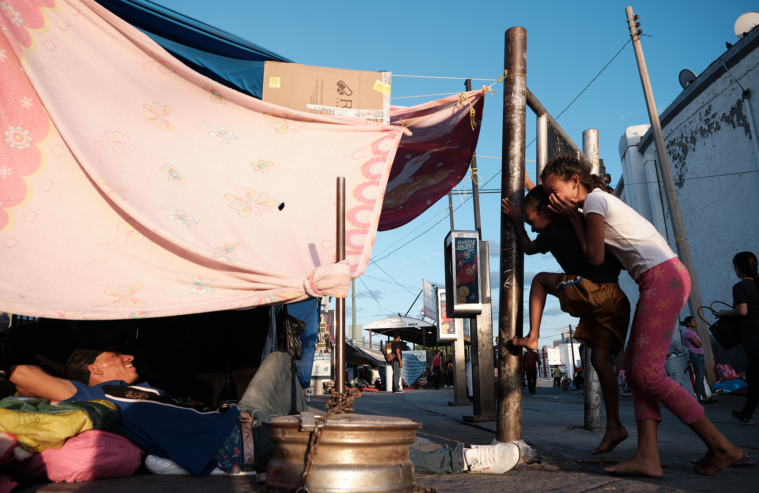
False rumors circulated on social media and television that the United States was giving preference to Mexican asylum-seekers from specific states, helping to fuel migration to the border. Others were simply compelled by the worsening violence around their homes. Most of the residents of the tent village had similar stories: Their small towns were completely overrun by gangs who were threatening to kill them if they didn’t pay exorbitant extortion fees or agree to work for them.
Though many are out of the immediate line of fire, advocates argue that making them wait in Mexico is putting them in further danger.
Above, Bishop Michael Buerkel Hunn gives an interview while a group of Anglican priests and volunteers wait with migrant families seeking asylum. Mexicans—along with asylum-seekers from other countries affected by the Trump administration’s Remain in Mexico policy—are subject to a practice known as metering, which has been in place since 2018. The rule restricts the number of people who are allowed to cross the border and apply for asylum.
Mexican asylum-seekers who arrived at the border in August and September quickly realized that applying for asylum would be much harder than they’d imagined. And unlike their Cuban and Central American peers under Remain in Mexico, there was no official system to hold their place in line. So while other asylum-seekers created semi-normal lives in Juárez—working and living in shelters or apartments—many Mexicans were stuck in limbo by the bridge, waiting for a chance that might never come.
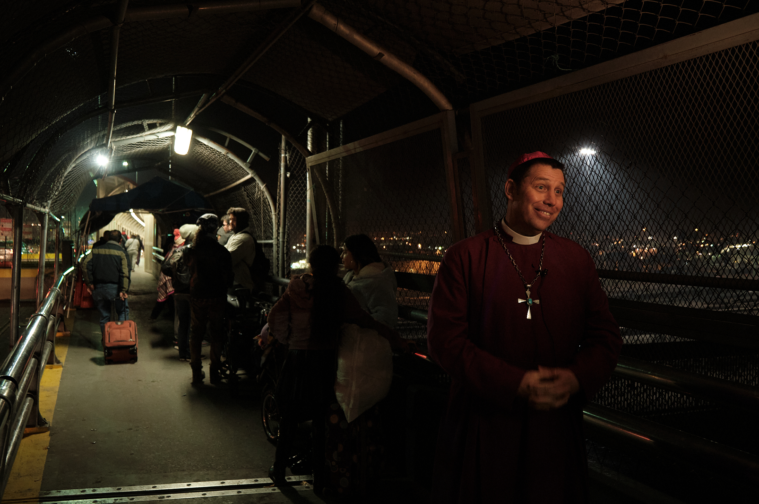
Leonardo, a 28-year-old cab driver from Guerrero, laughs with his two children. Months after his cousin was murdered for refusing to pay an extortionist, Leonardo and his wife jumped at what they believed was an opportunity to flee to the United States.
When the family first arrived, spirits were high at the camp. The weather was good and migrants still believed, despite the longer than anticipated wait, that they’d be allowed to cross over into the United States and obtain asylum status with relative ease.
Three elected leaders from the camp presided over a waiting list that dictated which families could try their luck at crossing each day. In the beginning, only the group at the top of list could attempt to cross the bridge. By December, anyone in the top 20 could try.
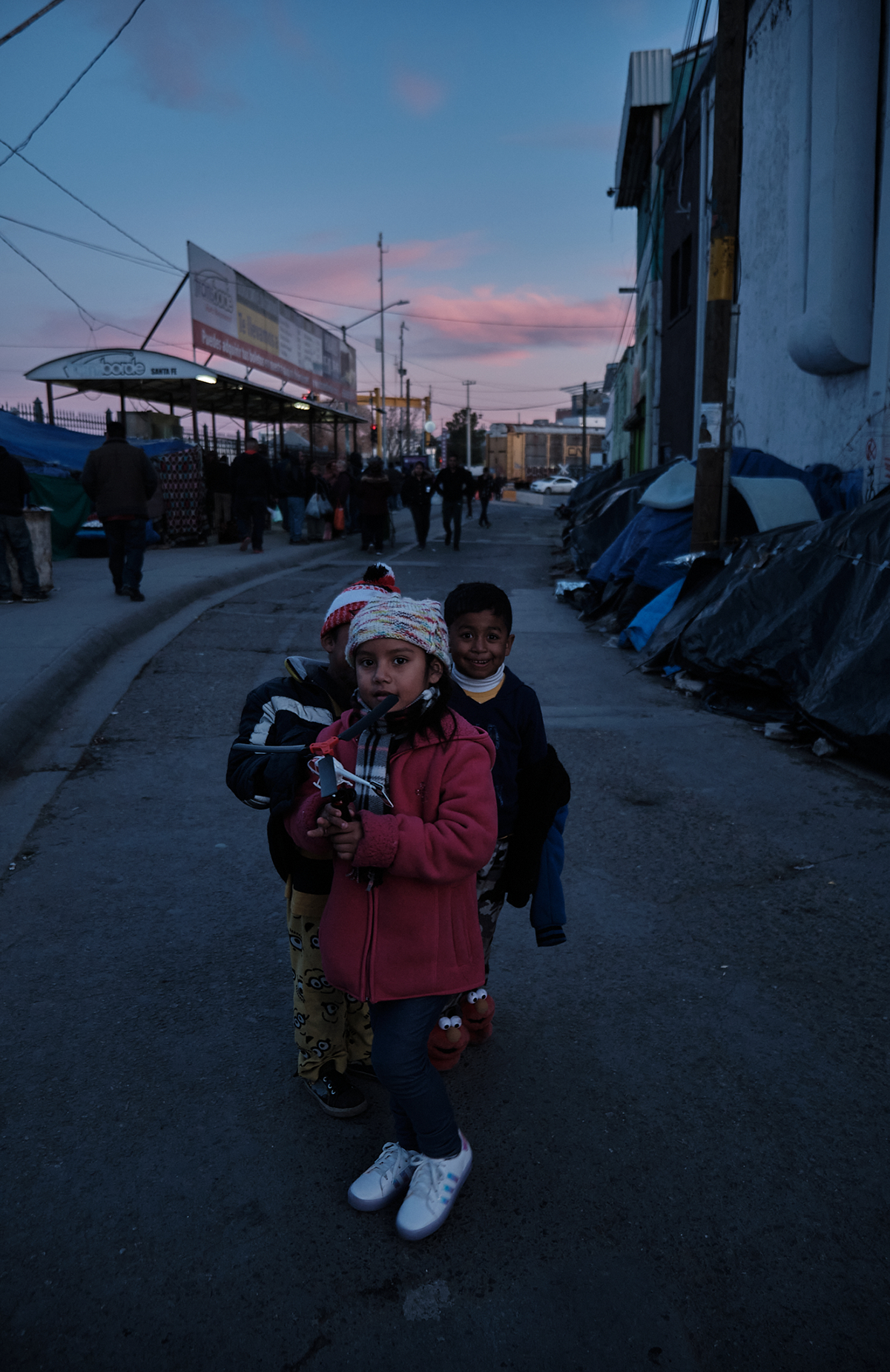
Most of the migrants came in family units, with parents often citing their children’s wellbeing as the primary motivating factor in their decision to leave home and attempt to request asylum. One 25-year-old mother, who requested to be neither photographed nor named for security reasons, says her son was the only reason she decided to come to the border. “I’ve already lived,” she says. “I’ve had experiences, so I don’t really care if I die. But my son hasn’t lived, he’s just a kid. He deserves to live.”
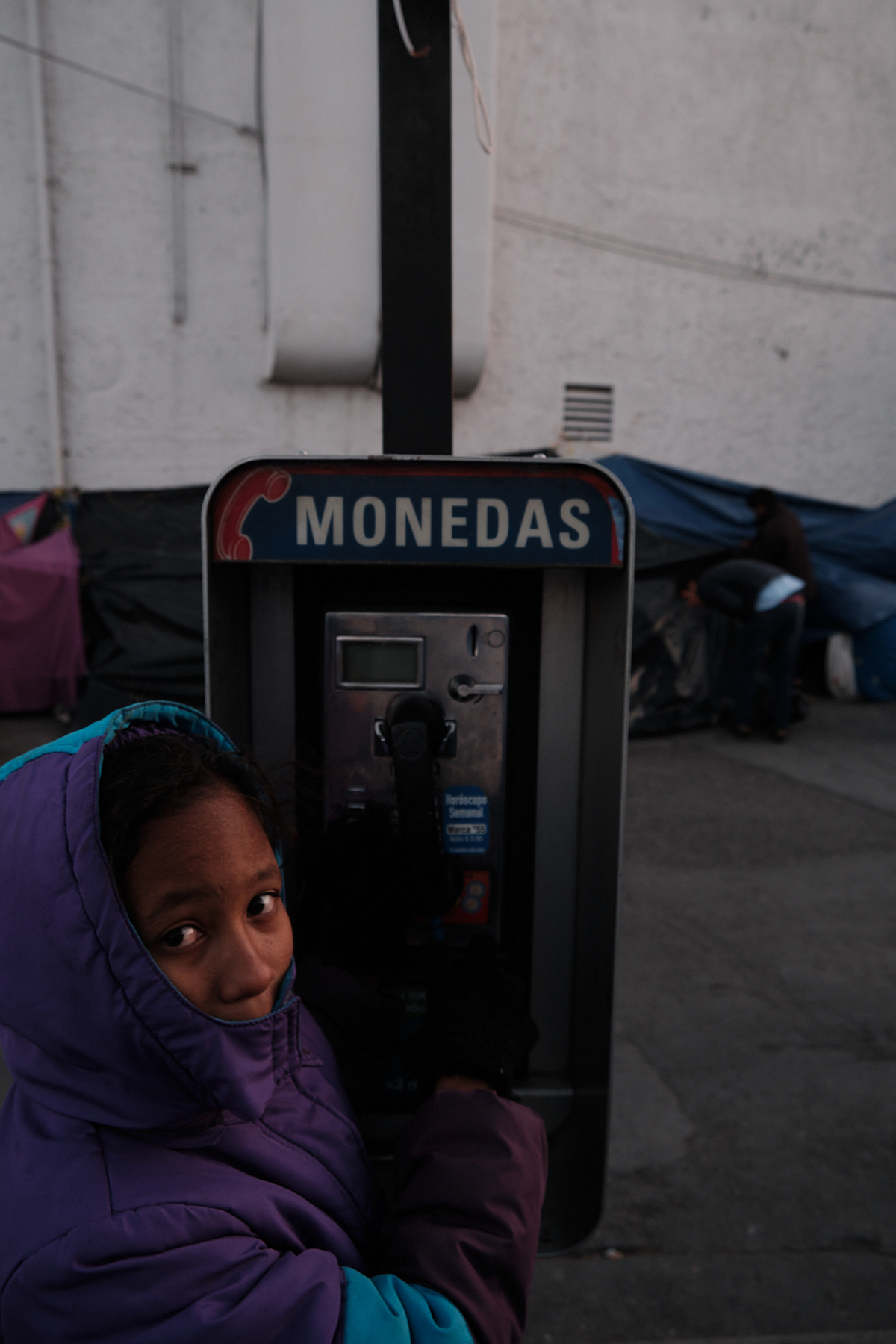
Enthusiasm had waned by October. The camp was crammed with over 250 families living on a small side street; temperatures were dropping, and people were realizing that the stories they had heard about asylum were at the very least exaggerated—if not completely untrue. By November, many families were starting to trickle out. Some went back to their homes, while others sought refuge elsewhere in Mexico.
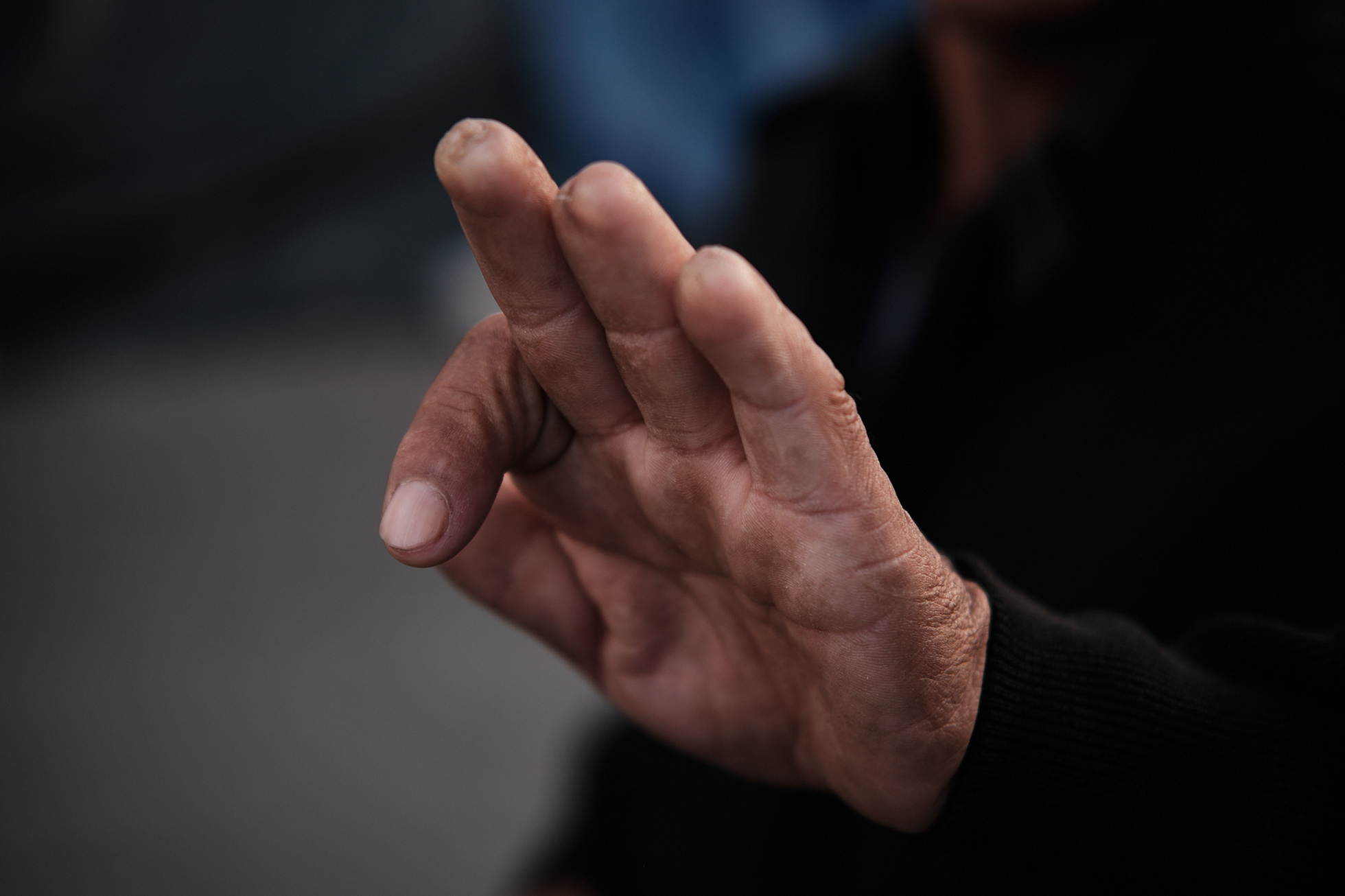
Many of the people at the camps shared horrific tales of violence. Adrian, a 65-year-old farmer from Zacatecas, says he was kidnapped and held for ransom in 2018 by members of the cartel that ran his town. “They called my family and told me to scream to get them to pay up,” he says. “I wouldn’t scream, so they started cutting my fingertips off, but I still didn’t scream. Then they got ready to do the same to my genitals and I screamed … you have to scream.”
His family paid the $6,000 ransom, Adrian says, but the kidnappers still smashed in his head with a baseball bat and cut open his stomach with a knife, leaving him for dead. After he spent four months in the hospital in a coma, he says that he and his wife sold their farming equipment and went on the run in northern Mexico, switching cities every couple months. They came to Juárez after hearing rumors about easy asylum for Mexicans. If they made it to America, they planned to join their sons in the Dallas–Fort Worth area and take care of their grandchildren full-time. After a brief stint in a New Mexico detention center, however, Adrian failed his over-the-phone credible fear interview and was deported back to Juárez. “The man on the phone told me I was lying. How could I be lying? I’ve got the scars to prove everything.”
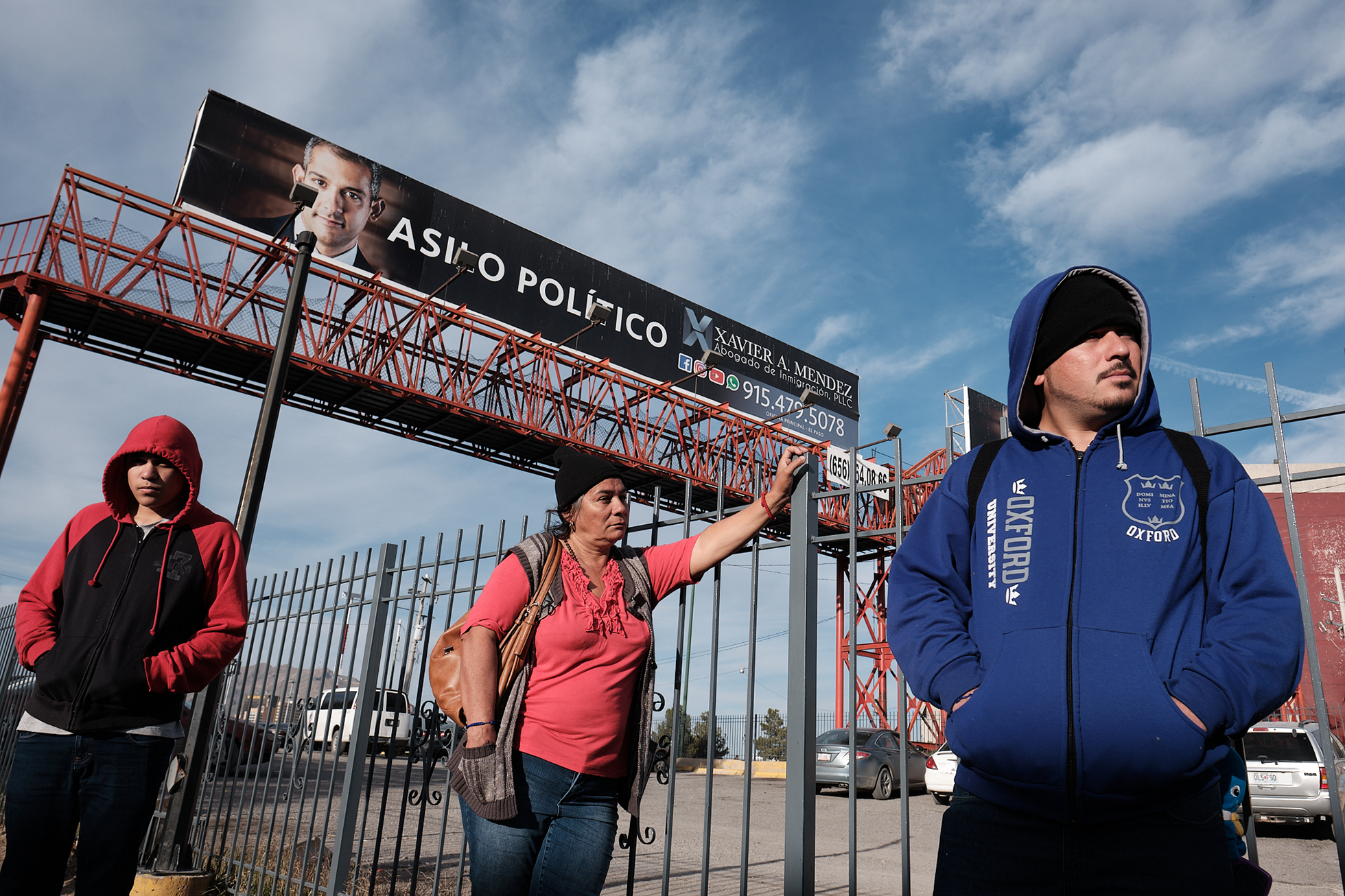
Rita Billalobos, 56, fled her home in La Peña, Michoacán, after her husband and oldest son were killed by local gangsters for refusing to pay a cut of the profit made from cows they sold. Ramón Ortega—Rita’s oldest surviving son, pictured right—had already had numerous run-ins with narcos in the region before his father and brother were killed. He was picked up three separate times under the suspicion that he worked as a lookout for one of the rival criminal organizations. “[Each time] they put me in a truck and beat me up … They wanted information that I didn’t have,” Ramón Ortega says. “They pummeled my stomach with the back of an AR-15. They left it with big black bruises. They also used a cattle prod on my neck and the back of my head. It was horrible, but if I lied and gave them the information they wanted and they found out I was lying, it would have been even worse.”
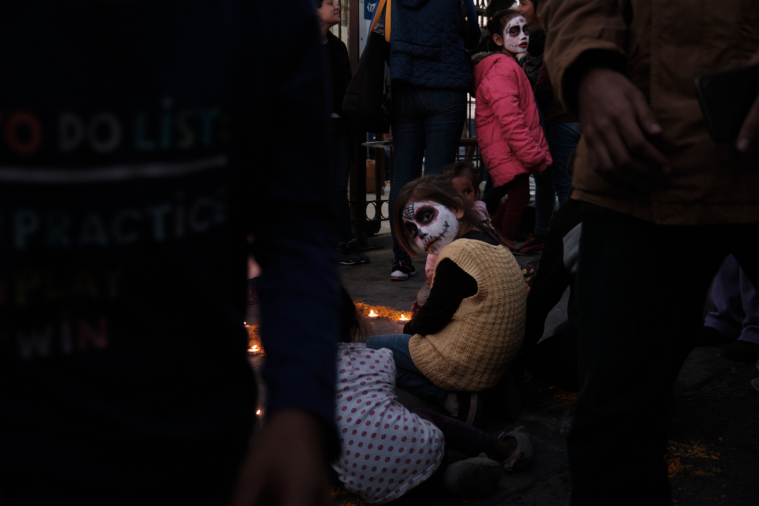
Despite the obvious hardships at the camp, asylum-seekers still came together to give their children a sense of normalcy. Here, children are pictured on November 1 during Dia De Los Muertos. Every Tuesday volunteers organized a movie night complete with popcorn and soda. During the Christmas season, an altar of the Virgin of Guadalupe was set up, and the children sang carols in the evenings.
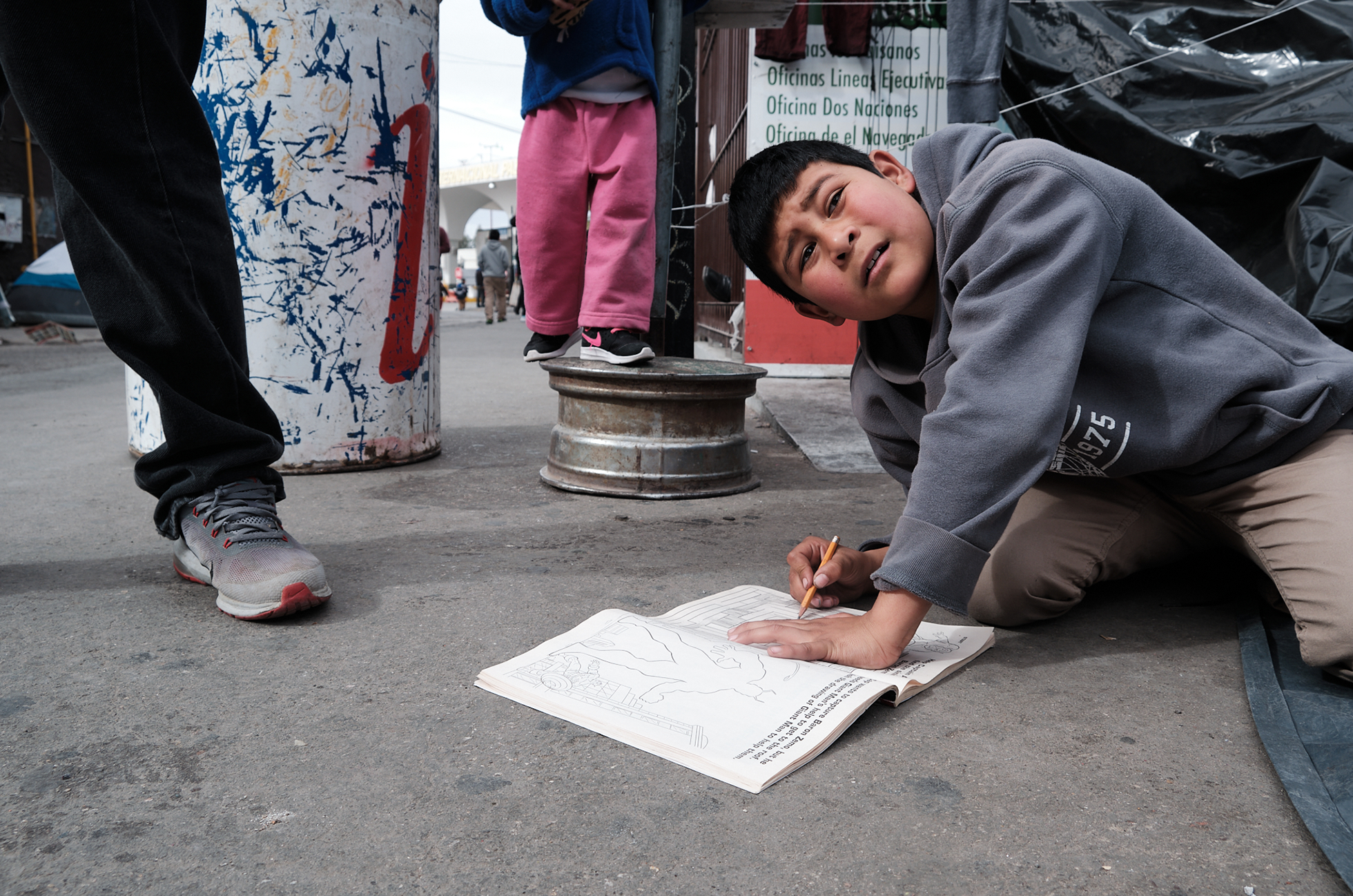
Parents were intent on not letting their children fall behind in their schooling. However, with few adults in the community having studied past middle school, the role of teacher was entrusted to Reverend Cristina Rathbone, an Episcopal priest from Boston who came to work at the camp and was by far its most consistent volunteer.
“What is extraordinary about working with kids in dire situations like this is their extraordinary resilience,” Rathbone says. “No matter what happens the day before, they return always full of life and curiosity and readiness to play. They teach me so much, and I am grateful beyond measure to be able to share a little in their lives.”
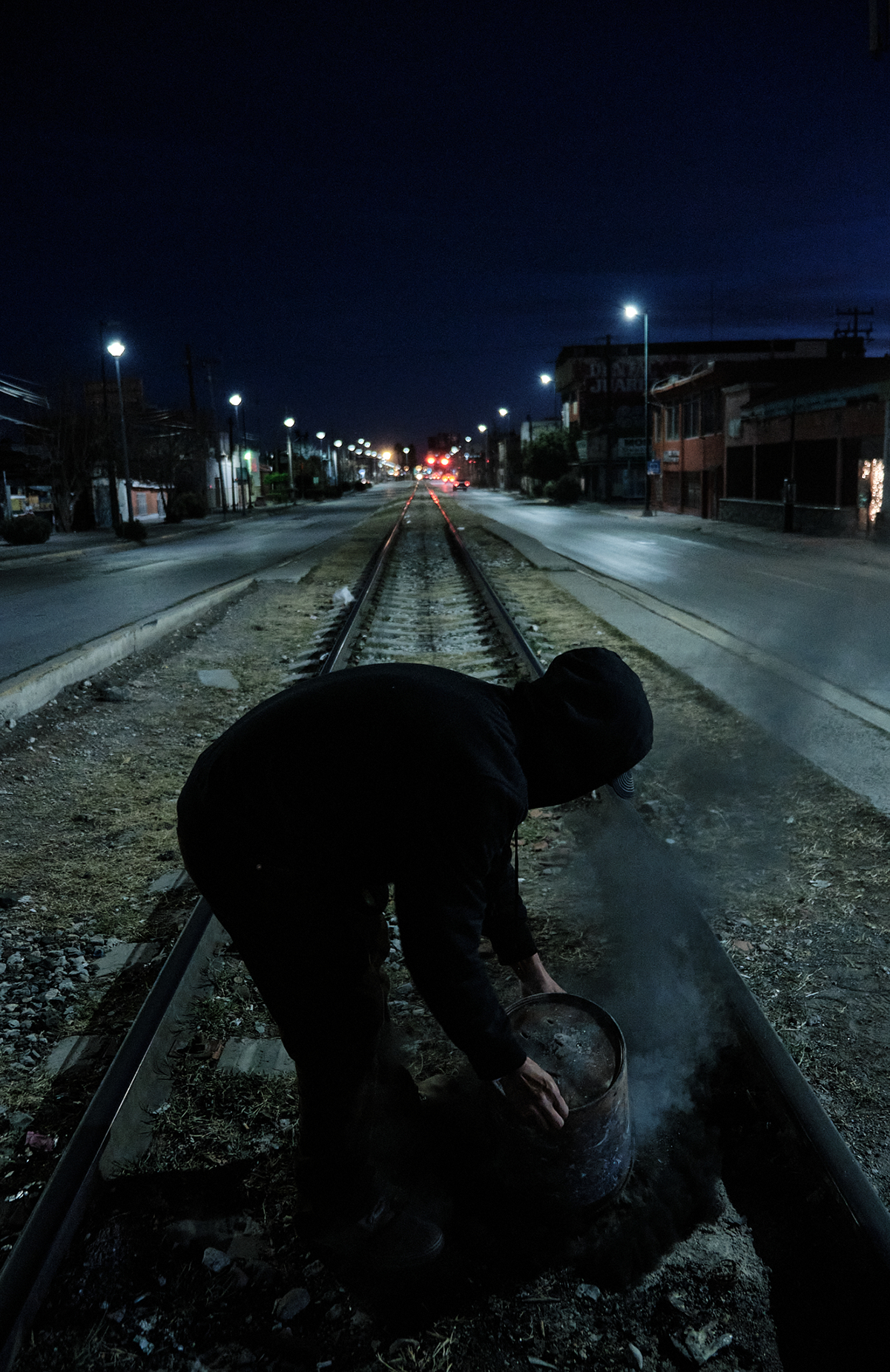
Residents relied on each other for safety. A man empties a fire bucket at the nearby train tracks while he and four others take turns guarding over the camp. Their vigilance served two purposes: helping to ward off any criminals who’d attempt to rob the tents, and stopping any family that tried to cross the bridge before their turn.
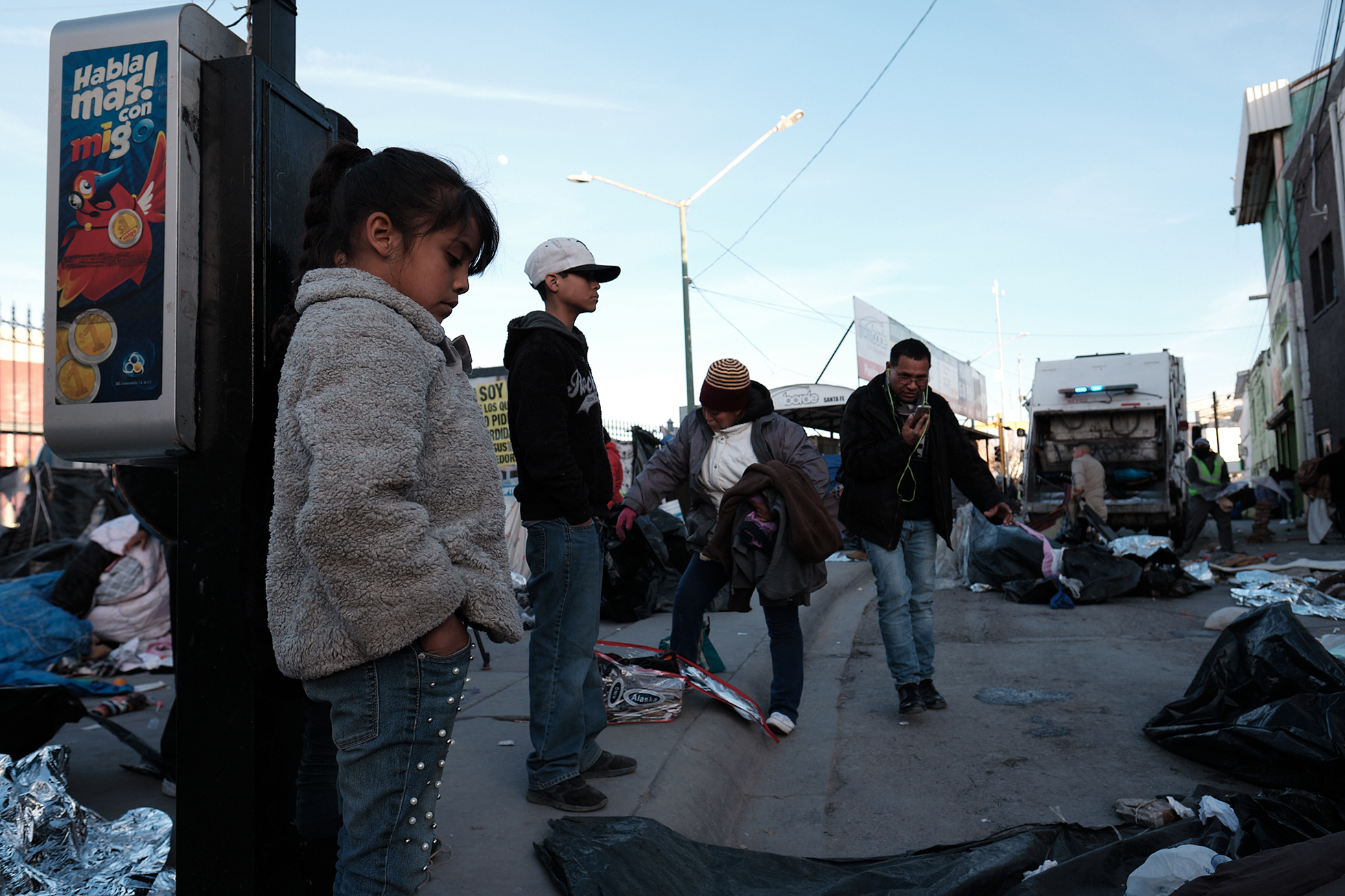
By late December, 65 families were left at the Santa Fe camp. From December 19 to January 4, none were allowed to cross. As they prepared to clear the camps, authorities offered a pathway: Migrants could join the Remain in Mexico list. By the time the camp was destroyed on January 7, all 65 families had joined. Despite some initial hesitation, it now seems families are being allowed to make their asylum claims with much more regularity than before.
Many migrants suspected that Mexican authorities dispersed the camp so suddenly in anticipation of President Andrés Manuel López Obrador’s January 10 visit to Ciudad Juárez.
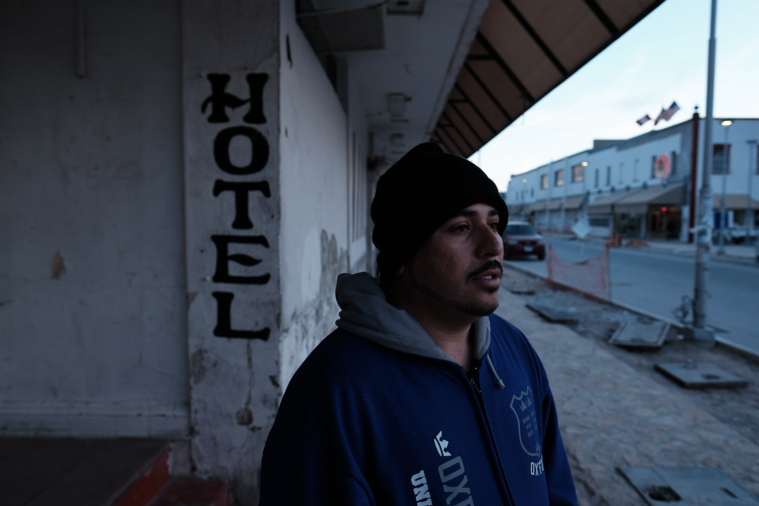
Ramón Ortega, his brothers, and their mother, Rita, were among the several families that decided to forego shelters after the camp was cleared, instead opting to scrape together what little money they had to rent a cheap motel room. They’d been on the streets for three months.
“After a while you get used to sleeping on the ground outside, but it is nice to be back in a bed,” Ramón Ortega says. “We’ve suffered so much. Not just here in Juárez, not just this year with everything that happened to my father and brother. We’ve suffered all of our lives. My brothers and I started working when we were 7 or 8 … That’s when we picked up the machete to go cut down the woods to plant corn. We were so poor, there were nights we didn’t eat. I didn’t make it past primary school. I barely know how to spell my name. Life is a fight. Life is a fight until the end.”
